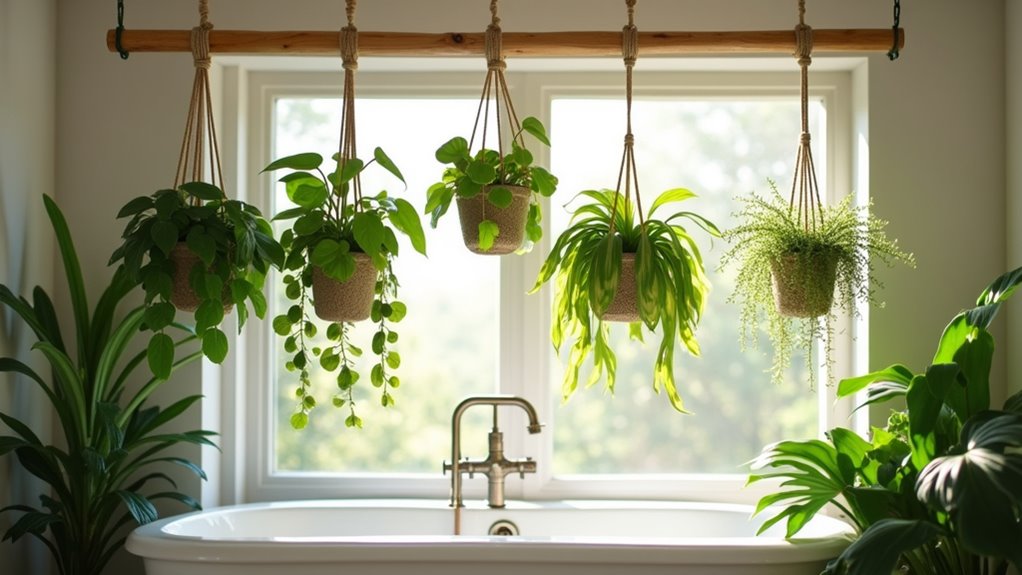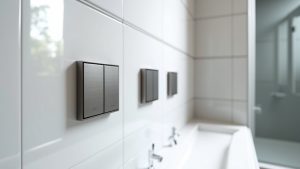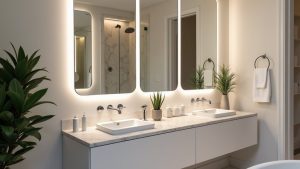The five best low light hanging plants for bathrooms include the Heart Leaf Philodendron, known for its glossy, heart-shaped leaves and humidity tolerance. English Ivy offers trailing vines and thrives in moist conditions. The Boston Fern displays lush fronds, preferring high humidity. Pothos adapts well to various lighting, while the Wandering Jew features vibrant foliage. Each plant enhances aesthetics and air quality, making any bathroom inviting. Further details on care and maintenance await exploration.
Key Takeaways
- Heart Leaf Philodendron: Adaptable in low light, with glossy, heart-shaped leaves that enhance bathroom aesthetics and thrive in humidity.
- English Ivy: Features trailing vines and ornamental foliage, thrives in medium to bright light, and benefits from bathroom humidity.
- Boston Fern: Displays lush fronds and prefers indirect light; it thrives in high humidity and requires consistent moisture for optimal health.
- Pothos: Robust and adaptable, it thrives in various lighting conditions, needing uniform moisture and avoiding direct sunlight to prevent leaf burn.
- Wandering Jew: Fast-growing with vibrant variegated leaves, it requires bright indirect light and benefits from regular pruning and high humidity.
Heart Leaf Philodendron
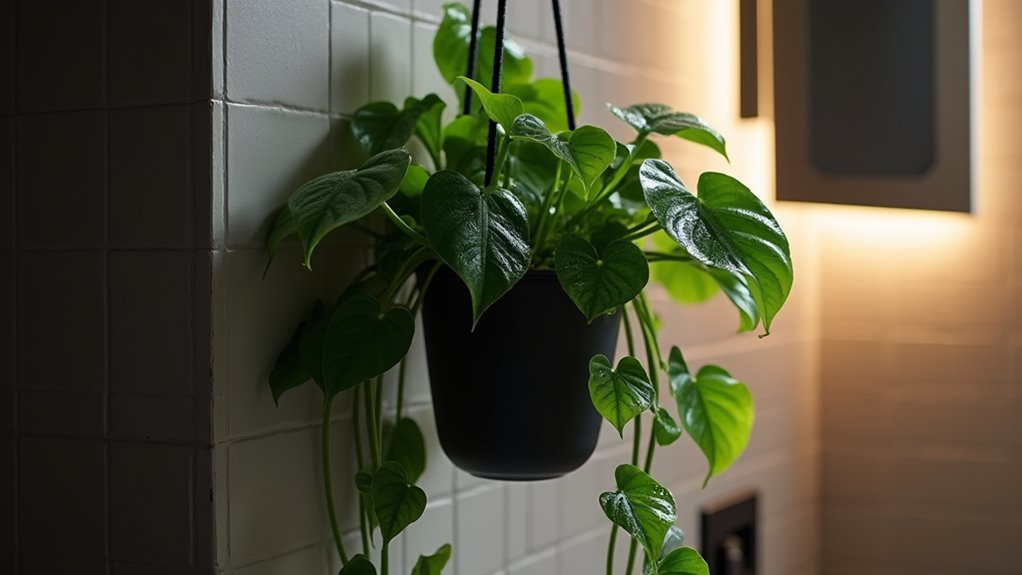
The Heart Leaf Philodendron is a highly adaptable houseplant known for its ability to thrive in low light environments, making it an ideal choice for bathrooms.
A versatile houseplant, the Heart Leaf Philodendron flourishes in low light, making it perfect for your bathroom space.
Characterized by its glossy, heart-shaped leaves, this plant can enhance bathroom aesthetics significantly. It tolerates typical bathroom humidity levels, ranging from 40-60%, which contribute to its healthy growth. Although it prefers medium to bright indirect light, it does well even in dim corners, provided it receives some indirect illumination. Additionally, this plant is part of the recommended low-light houseplants category, ensuring it remains healthy even in challenging light conditions. Given its origins as an epiphyte in tropical climates, it has evolved to adapt to various light situations while maintaining its vigorous growth.
Regularly misting the leaves can also help maintain humidity, promoting a lush appearance and minimizing the risk of fungal issues commonly associated with moist environments.
English Ivy
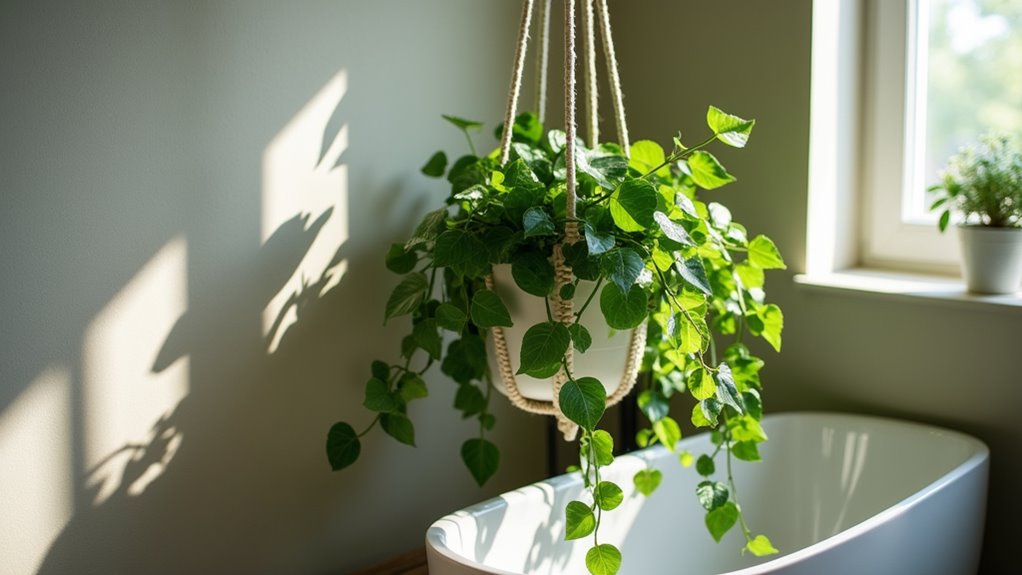
English Ivy, recognized for its trailing vines and ornamental foliage, serves as an excellent choice for low-light areas, including bathrooms. While it can grow in low light, it thrives with medium to bright indirect light; insufficient illumination may result in leggy growth and smaller leaves.
In terms of plant care, English Ivy prefers evenly moist soil, allowing the top 25-50% to dry before watering to prevent root rot. Bathrooms generally provide the humidity it enjoys, especially if misted or equipped with a pebble tray.
Optimal temperature ranges between 50-80°F (10-27°C) foster healthy growth. Regular pruning is essential to prevent invasiveness and encourage bushier stems, making it ideal for hanging planters while also requiring light fertilization during the growing season.
Boston Fern
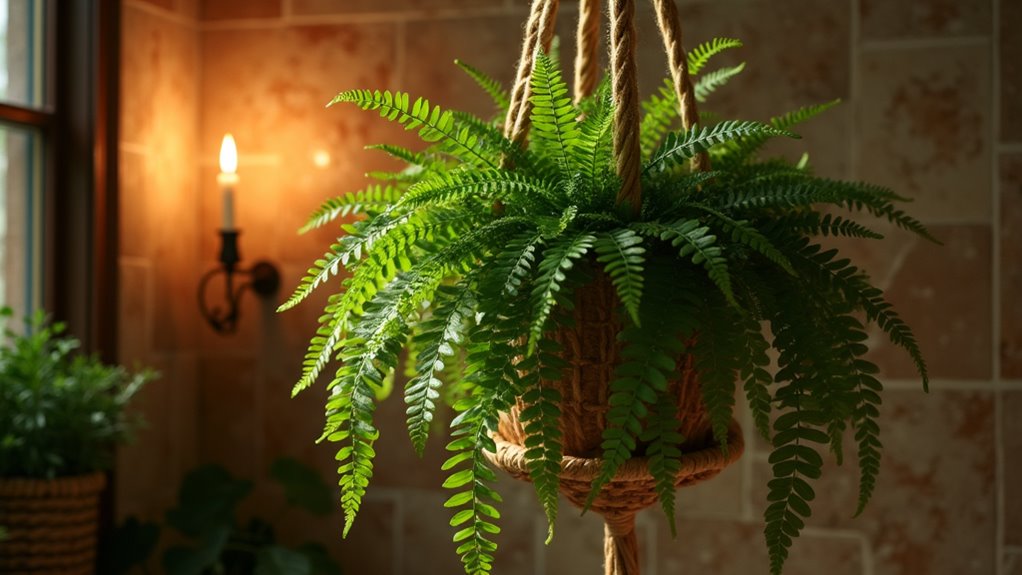
Boston ferns, known for their lush, arching fronds, are a popular choice for low-light environments, particularly in bathrooms where humidity levels align with their natural preferences.
Optimal Boston fern placement involves suspending them in locations that receive bright, indirect light, away from direct sunlight to avoid frond damage.
They thrive with humidity levels between 50% and 80%, making bathroom conditions ideal.
Proper Boston fern care includes maintaining consistent moisture while allowing the topsoil to dry slightly between waterings, especially in low light.
Additionally, using distilled water minimizes mineral buildup.
Regular rotation supports even frond growth, while pruning yellowing leaves enhances vitality.
Careful attention to these factors ensures thriving Boston ferns in a bathroom setting.
Pothos

Pothos, a robust and adaptable houseplant, is highly esteemed for its ability to thrive in diverse lighting conditions, including the low light often found in bathrooms.
For effective pothos care, it is essential to consider the following:
- Varieties: Jade pothos is ideal for low light, while variegated types may lose vibrancy.
- Watering: Soil should be uniformly moist; drooping leaves indicate a need for water.
- Light Management: Avoid direct sunlight to prevent leaf burn, especially with neon pothos.
- Growth Conditions: Slower growth and smaller leaves signify limited light availability; regular rotation can enhance growth.
With its tolerance for humidity and varying light, pothos enriches bathrooms, making it an excellent choice for hanging displays.
Wandering Jew

Wandering Jew, a vibrant and fast-growing trailing plant, is known for its striking variegated leaves that can range in hues from green to purple and pink.
Optimal wandering jew care involves providing bright, indirect light to maintain vivid variegation patterns; insufficient light may dull colors. Ideal temperatures range from 60°F to 80°F, with high humidity enhancing growth, making bathrooms suitable environments.
The plant prefers well-draining soil and consistent moisture without sogginess, so watering requirements must align with humidity levels. Regular pruning promotes bushiness, while proper placement in hanging baskets enhances its aesthetics.
Introduce supplemental LED grow lights in low-light conditions to ensure continued vibrancy, avoiding leggy growth associated with neglect. Proper airflow protects against mold in humid settings.
